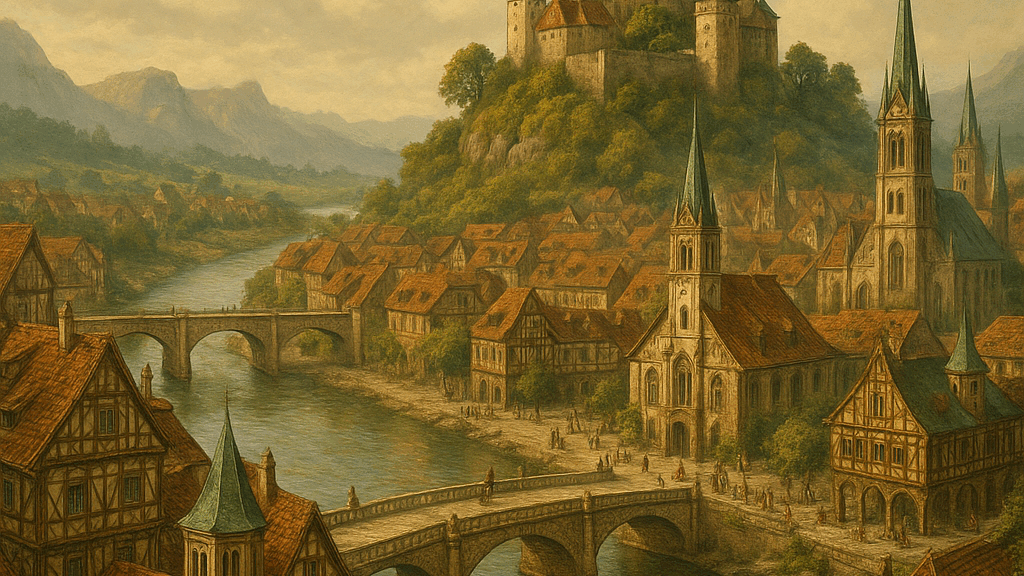
Aurenheim: Notes Toward a Fantasy City
I’ve been working on a new city for my fantasy setting, and I’m tentatively calling it Aurenheim (“Home of the Auren / shining people”). It’s still in the very earliest stages and many names will likely change. I haven’t pinned down everything yet but I wanted to put a few thoughts down while the ideas are still taking shape.
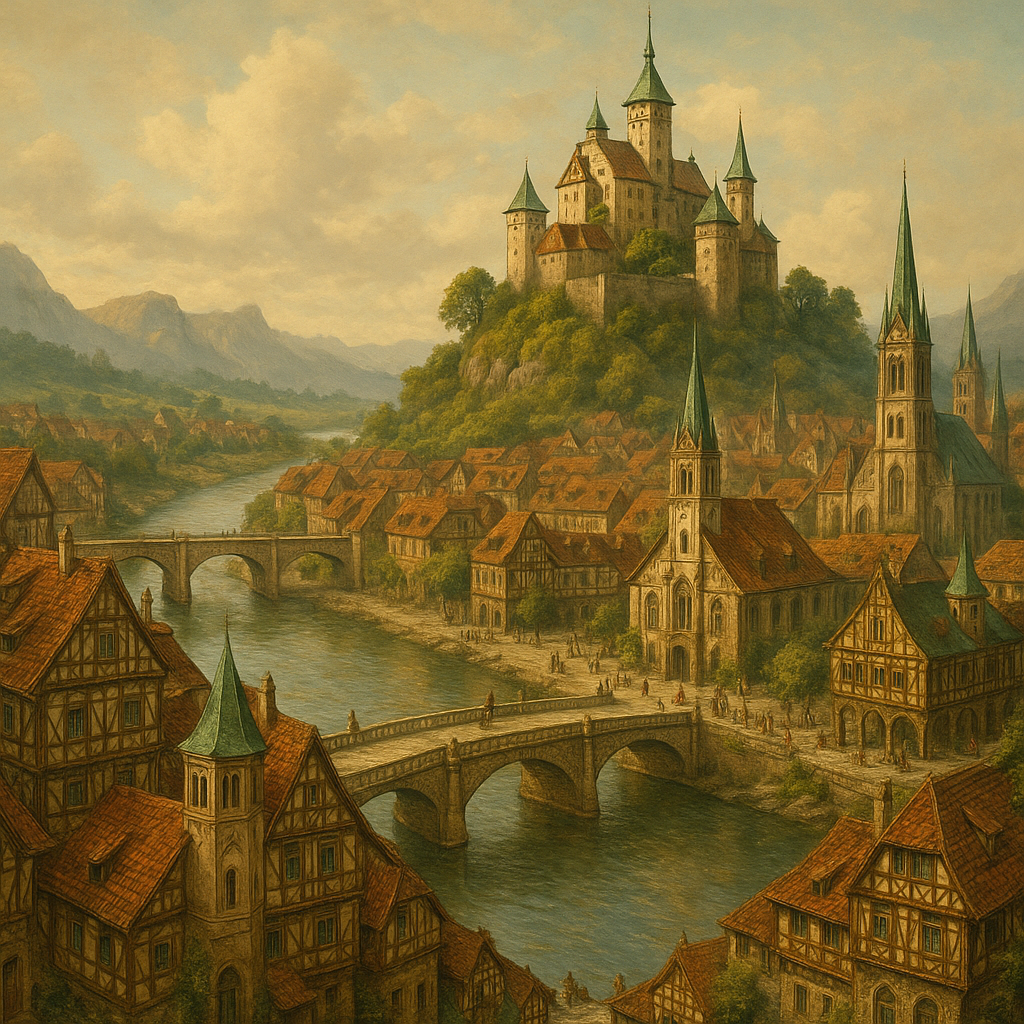
The city’s based (very) loosely on Salzburg, which I visited recently and thought would be a great model to loosely base a city on. It has a major river dividing the town, with two distinct hills on either side – one dominated by a stunning fortress, the other gentler and residential, with remnants of older fortifications. It felt like a natural template for a place that’s both strategic and old, layered in culture and contradictions.
Geography & Layout
Aurenheim is built on either side of the Silfrach River. The older part of the city – Altstadt – sits on the slope below the fortress, crowded and narrow, with layers of stone and timber pressing in from all directions. Across the river is Neustadt, slightly newer, slightly wider, but still constrained by geography and the slow growth of centuries.
To the east is Goldhang (“Golden Slope”), a steep, craggy hill topped by the Grünfeste – a fortress that’s half palace, half relic. It dominates the skyline. On the opposite side is Grünhöhe, more domesticated, terraced with gardens, monasteries, and the homes of those who can afford both quiet and a view.
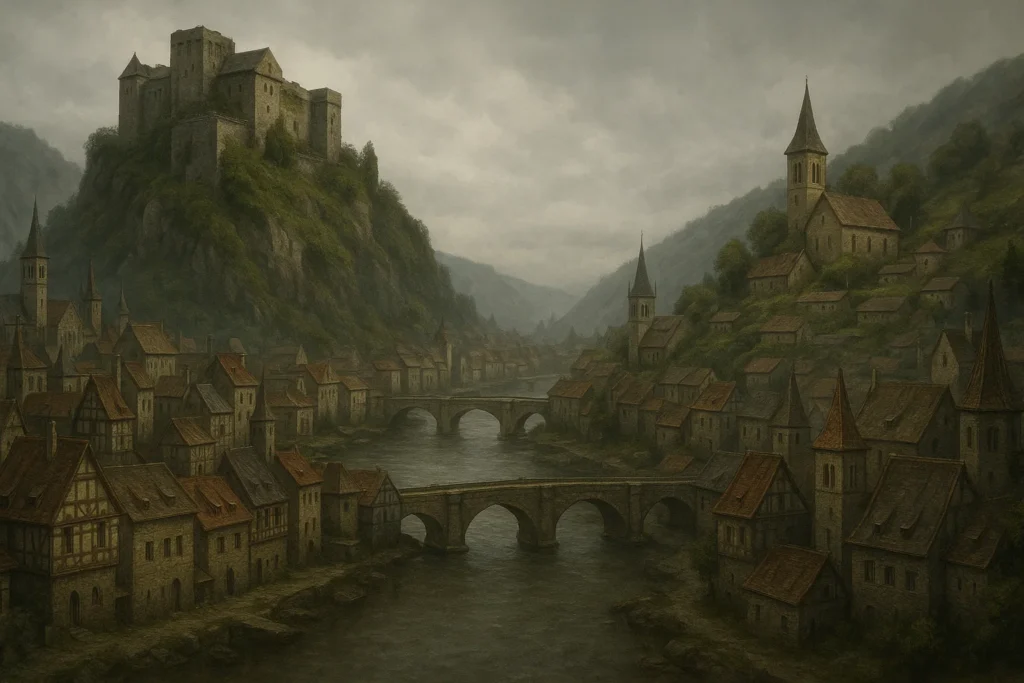
Aesthetic & Architecture
The architectural style is shifting. I started with a baroque influence from Salzburg but found it too ornate for the tone I’m aiming for. I’m leaning now toward a more restrained Germanic style – steep roofs, timber framing, heavier stonework, and functional Gothic lines.
There’s still a Renaissance element in some of the public buildings: guildhalls, a few temples, and some civic spaces built during a period of prosperity. But in general, I want the city to feel weathered, like it’s carried the weight of its own past for too long.
Language & Place Names
I’m building a language to help ground the names in something internally consistent. It draws from German roots but isn’t just copied over. So far, that’s mostly helped with naming districts and landmarks:
- Flüsterbrücke – the “Whisper Bridge,” a quiet, covered crossing used more by poets and spies than merchants.
- Dreilichtkirche – the “Church of Three Lights,” a faded temple that serves a trinity of forgotten gods.
- Festung Falkenstein – “Falcon Stone Fortress,” an abandoned watchtower on the city’s edge, now a roost for actual falcons.
Languages are very much in the earliest stages of development, I don’t intend to develop full languages, but just want to keep some consistency in naming conventions within the individual kingdoms as they develop.
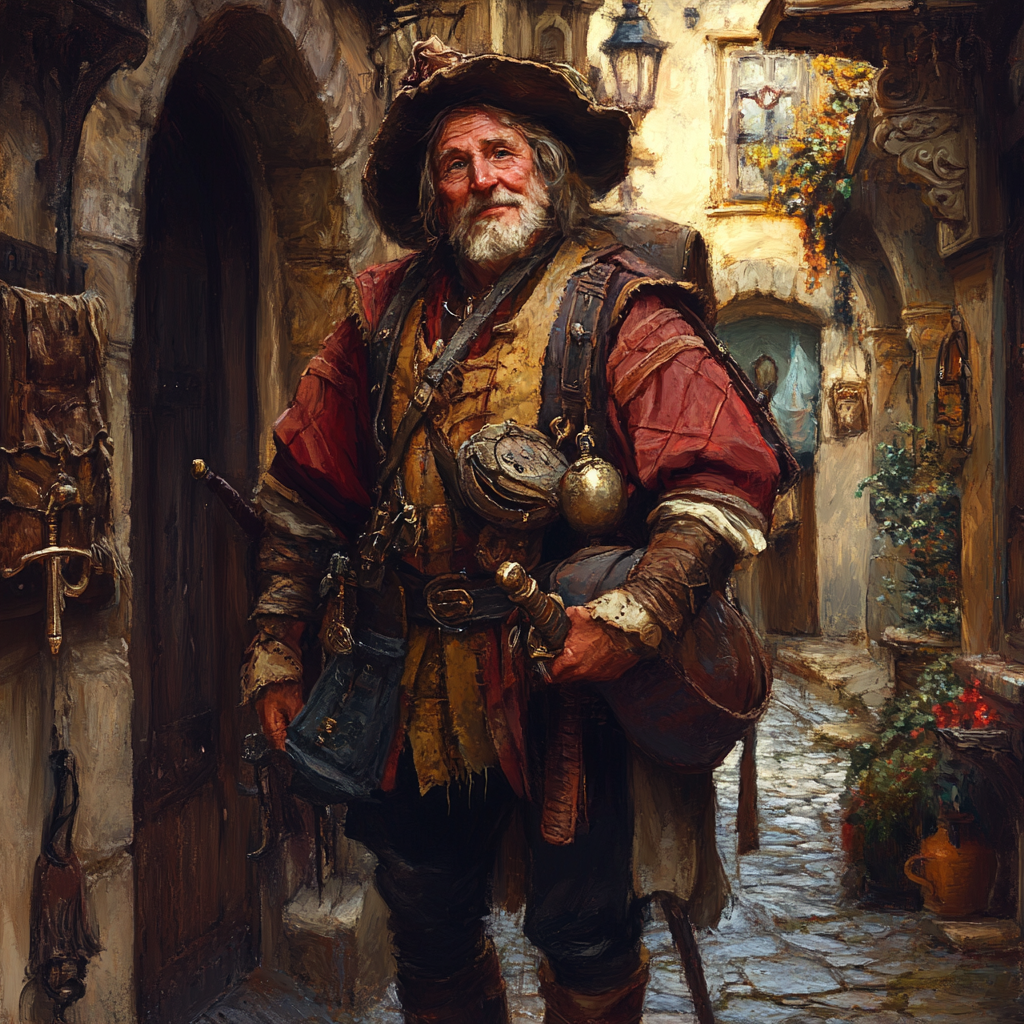
Cultural Tone
Aurenheim isn’t a heroic city. It’s not the capital, not the shining jewel of anything. It’s old, useful, and still relevant, but the best days might be behind it. Historically it made its wealth from mining in the surrounding mountains (hence the reference to ‘shining people’ – from the precious metals and gems that made it wealthy). It has art, music, and memory – but also bureaucracy, superstition, and social friction.
I imagine a place where stories accumulate more than they resolve. Magic is present but regulated, often overlooked, or hidden in plain sight. Guilds fund festivals out of obligation. The nobility play at patronage while hoarding grain and precious things.
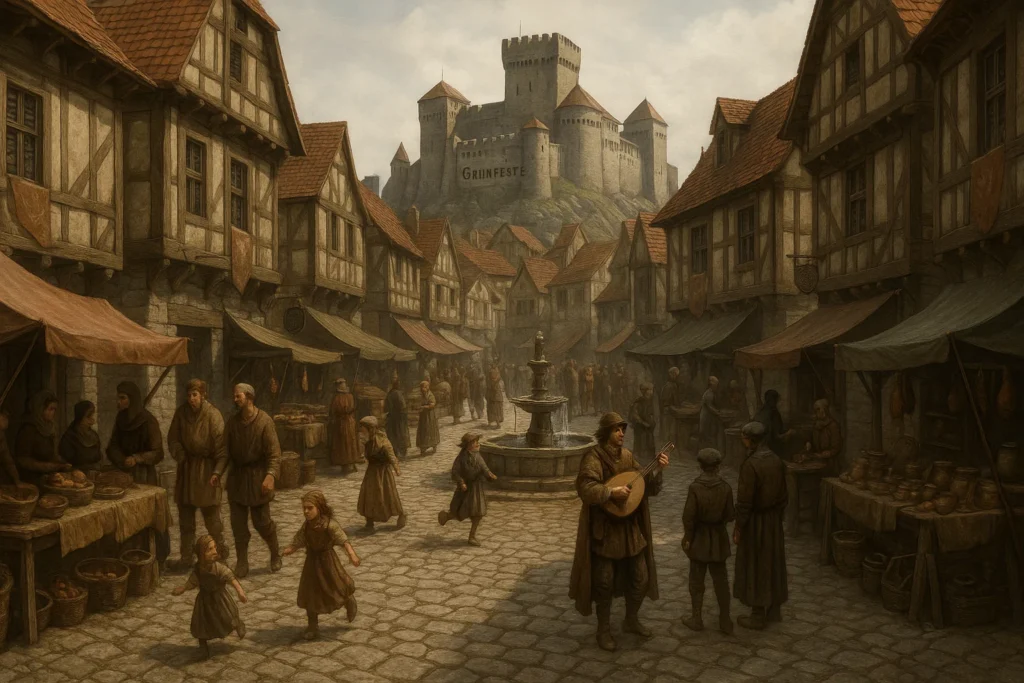
Still Developing
This version of Aurenheim is temporary. It’s 0.01 and will likely change. Some names will shift, and parts of the layout may not hold up once I start placing actual events and people into the space. But for now, it feels like a useful setting – solid enough to build on, ambiguous enough to adapt.
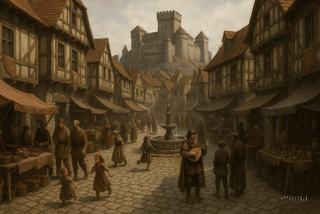
—
More soon.